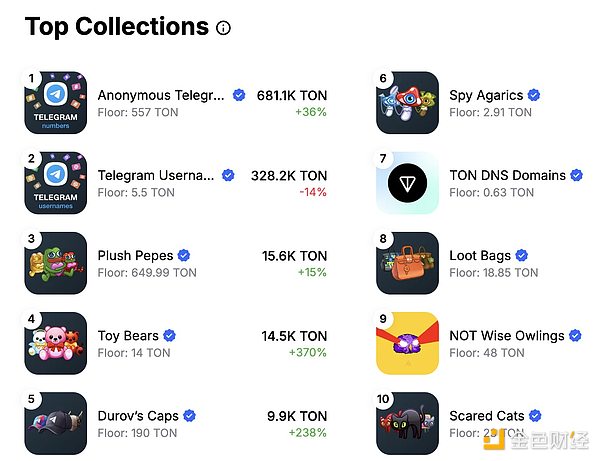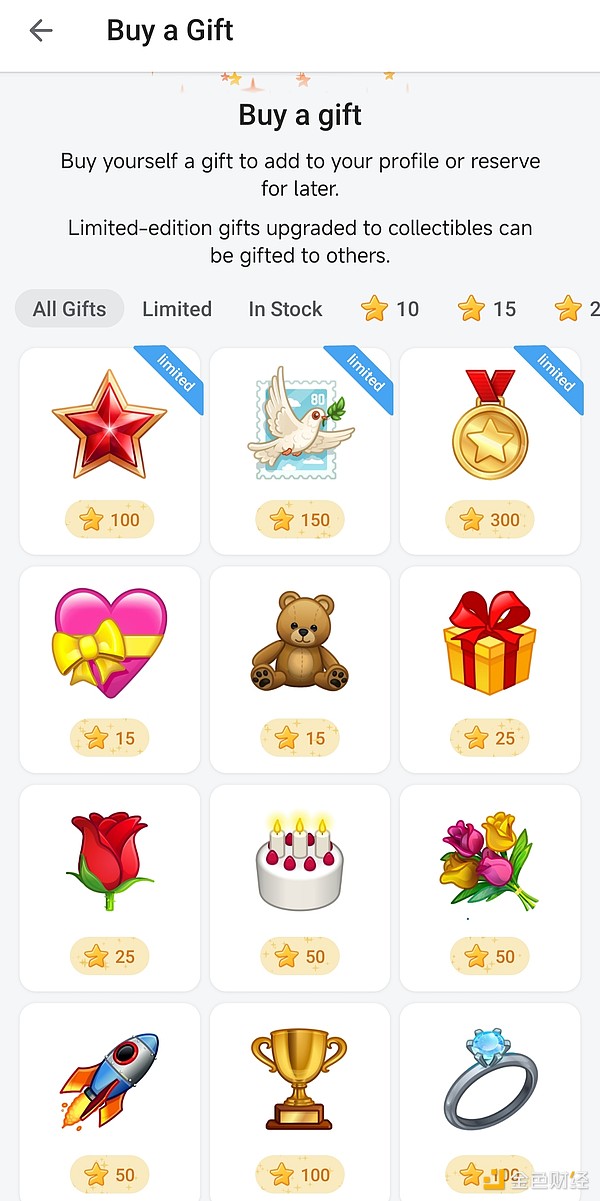Jessy, Golden Finance
On May 9, Telegram launched the Gift Market, an NFT collectibles market based on the TON chain. In October 2024, Telegram launched the "Gift" feature, where users can send personalized animated artworks and messages to contacts. These gifts can be minted into NFTs and then sold on specific markets.
The launch of the current gift market allows gift recipients to choose to display or sell these gifts on their profile pages in exchange for internal circulation tokens Stars. Of course, Stars can also be used to purchase gifts directly in the gift market.
The direct impact of this move is to further improve the TelegrmNFT market ecosystem, giving users a more convenient place to trade "gifts". A deeper point is that this move has once again expanded the product category of social assets on Telegram.
The development of Telegram gifts
In October 2024, the gift function in Telegram was launched, which is the core of Telegram's NFT ecosystem. Users can send personalized animated artworks and messages to contacts. Some of these gifts are also designated as limited edition items that can be exchanged for NFTs.
The launch of this feature enables users to seamlessly convert digital gifts and interactions into blockchain-based assets, and NFTs can also be integrated into the Telegram game ecosystem. From a cultural ecology perspective, it enriches the cultural ecology within the TG community and creates a lot of new gameplay for TG's mini-games.
By January 2025, the external NFT trading platform Getgems can already support the trading of Telegram's gift NFTs. Later, Telegram also launched a Bot that can trade these gift NFTs within its own network, with the trading currency being TON.

Currently on the Getgems market, TOP ONE's collections are anonymous mobile phone numbers of Telegram, which can be used to create Telegram accounts that are not bound to SIM cards. The current starting floor price has been raised to 549TON.
In fact, in 2022, Telegram launched its own NFT trading platform called Fragment. Anonymous numbers and users can be traded on the platform, and advertising services and Telegram Premium subscriptions can also be purchased.
The launch of the gift market allows users to use Star, a virtual currency within the platform, to buy and sell gifts, and the gifts for these transactions are no longer limited to official issuance. In other words, users can sell the gifts they own and earn Stars, forming a complete economic cycle.
When selling, users can open the gifts they already have in their personal profile, click the sell button, set the expected price in Stars, and then list the gifts on the market. The successfully listed gifts will not only be publicly displayed in the market, but also on the corresponding user profile page. Buying a gift is even simpler. You only need to hold Star tokens and buy it on the market. You can choose to buy it for yourself or for your contacts.

Social transactions are the next focus
Before the emergence of gift NFTs, the NFT-related transactions around Telegram were mainly some social assets on Telegram. At present, if these gifts owned by users can be given more empowerment by the community in the future, then this will also bring a new element of social and economic interaction to Telegram.
With the emergence of gift NFTs, Telegram is actually expanding the boundaries of social assets. When blockchain technology was first born, one of the major application scenarios was the confirmation of asset ownership. From social accounts to gifts, only Telegram has gradually transferred the social assets of Web2 to the chain of the Web3 world.
This year, Telegram's focus is on social transactions, and putting users' social assets on the chain little by little, trading them, and opening up this economic chain is undoubtedly an important part of social transactions. The "gifts" that friends send to each other during chats are no longer just commemorative, but also have economic value. This may also be the first step for users to accept social transactions.
 Catherine
Catherine






